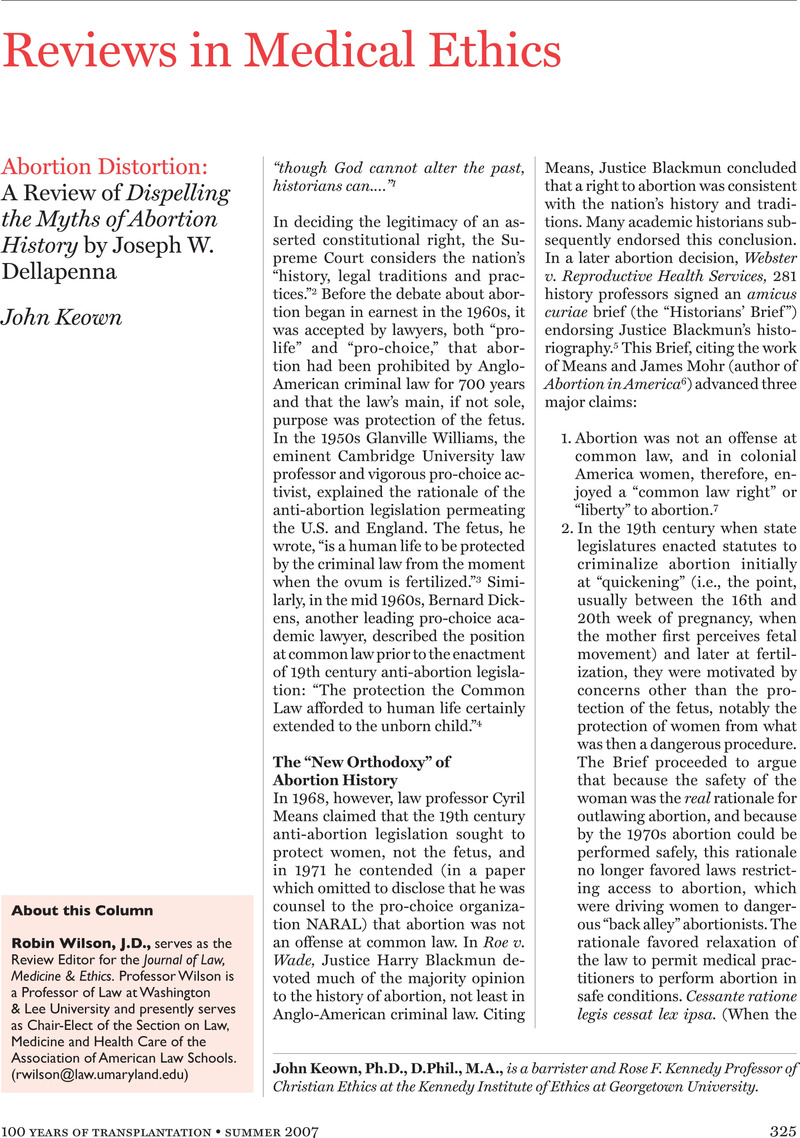No CrossRef data available.
Published online by Cambridge University Press: 01 January 2021

Robin Wilson, J.D., serves as the Review Editor for the Journal of Law, Medicine & Ethics. Professor Wilson is a Professor of Law at Washington & Lee University and presently serves as Chair-Elect of the Section on Law, Medicine and Health Care of the Association of American Law Schools. ([email protected])